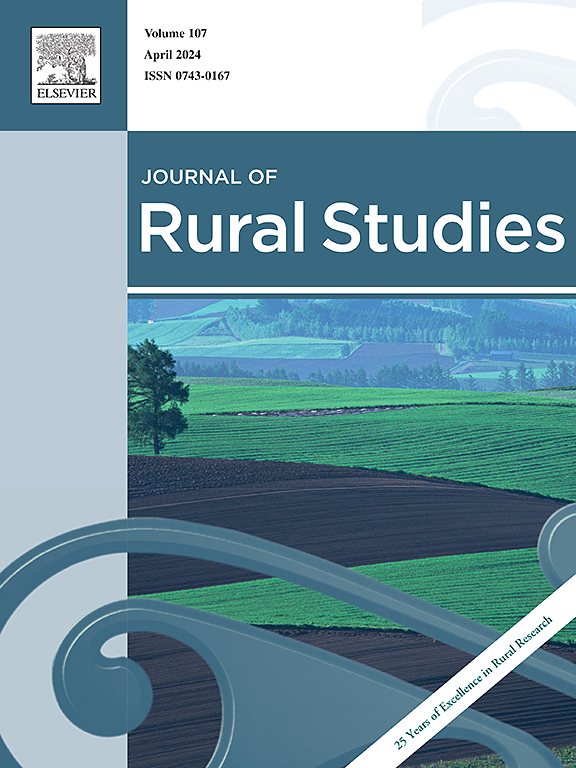坦桑尼亚妇女的土地权:村庄土地使用规划是否加强了妇女的土地权?
IF 5.7
1区 社会学
Q1 GEOGRAPHY
引用次数: 0
摘要
基于对文献的范围审查,我们研究了坦桑尼亚的村庄土地利用规划(VLUP)是否加强了妇女的土地权利,这是由妇女单独或共同拥有入住权习惯证(ccross)来衡量的。该审查强调了妇女VLUP过程结果的显著差异。虽然一些项目显示妇女拥有很高的cro所有权,但在许多情况下,她们要求自己的权利和收到文件方面存在障碍。主要挑战包括妇女在VLUP进程中的参与有限、妇女在乡村机构中的代表性有限、CCRO申请的成本、父权制规范和家庭权力动态。一些民间社会组织改善了妇女参与妇女团体的情况,制定村庄章程已证明在减少土地所有权方面的性别差异和改善妇女代表性方面是有效的。尽管有这些倡议,挑战仍然存在,例如妇女不愿意增加她们已经很沉重的劳动负担,担任无薪志愿职位,以及社会规范限制她们参加会议。外部组织也引进了基于手机的应用程序或遥感数据,以便利收集数据和解决争端。然而,这些技术解决方案需要支持性培训和有利的社会文化环境才能有效。我们的结论是,虽然VLUP进程有可能保障妇女的土地权,但在许多情况下,除非在确保性别平等方面作出重大投资,否则男子可能会以牺牲妇女的利益为代价受益。在某些情况下,也可能需要注意VLUP的牧民社区和少数民族的边缘化问题。鼓励坦桑尼亚政府收集有关妇女土地权的数据,报告实现可持续发展目标5a的进展情况,并确保通过土地权赋予妇女经济权力。本文章由计算机程序翻译,如有差异,请以英文原文为准。
Women's rights to land in Tanzania: Does village land use planning strengthen women's land rights?
Based on a scoping review of the literature, we examine whether village land use planning (VLUP) in Tanzania strengthens women's land rights, as measured by women owning Customary Certificates of Right of Occupancy (CCROs) as individuals, or jointly. The review highlights significant variations in the outcomes of VLUP processes for women. While some projects show high levels of CCROs ownership by women, in many cases there are obstacles to them claiming their rights and receiving the document. Key challenges include limited participation of women in VLUP processes, limited female representation in village institutions, the costs of CCRO applications, patriarchal norms, and household power dynamics. Some civil society organizations have improved women's participation in VLUPs, and developing village bylaws has proven effective in reducing gender disparities in land ownership and improving women's representation. Despite these initiatives, challenges remain, such as women's reluctance to increase their already significant labour burden with unpaid voluntary positions, and social norms limiting their participation in meetings. External organizations have also introduced cellphone-based applications or remote sensing data to facilitate the collection of data and resolution of disputes. However, these technological solutions require supportive training and a favorable socio-cultural environment to be effective. We conclude that while VLUP processes have potential for securing women's land rights, in many cases men may benefit at the expense of women, unless significant investment is made in ensuring gender equity. The marginalization of pastoralist communities and ethnic minorities in VLUP may also need attention in some cases. The government of Tanzania is encouraged to collect data on women's land rights to report on progress towards SDG goal 5a and ensure women's economic empowerment through land rights.
求助全文
通过发布文献求助,成功后即可免费获取论文全文。
去求助
来源期刊

Journal of Rural Studies
Multiple-
CiteScore
9.80
自引率
9.80%
发文量
286
期刊介绍:
The Journal of Rural Studies publishes research articles relating to such rural issues as society, demography, housing, employment, transport, services, land-use, recreation, agriculture and conservation. The focus is on those areas encompassing extensive land-use, with small-scale and diffuse settlement patterns and communities linked into the surrounding landscape and milieux. Particular emphasis will be given to aspects of planning policy and management. The journal is international and interdisciplinary in scope and content.
 求助内容:
求助内容: 应助结果提醒方式:
应助结果提醒方式:


